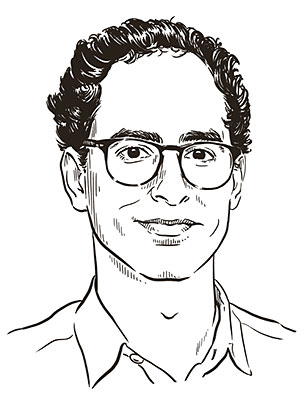On gut feelings and financial decisions.
Text: Yvonne Vahlensieck
As much as we’d like to think that we make economic decisions rationally, that’s not always the case. It’s becoming increasingly clear that our emotions also play a major role.
Should I buy a house or continue renting? Should I put my savings into stocks and shares? Can I afford to work less? The way in which people make these decisions is a key area of research for economists. “You can’t make economic forecasts until you understand this behavior,” says Armando Meier, a microeconomist who earned his doctorate at the University of Basel and is currently a postdoc at the University of Chicago. “Taken together, these small decisions also affect larger economic developments.”
A survey of 30,000 people
It has long been known that people don’t always act rationally in economic matters. Feelings are often the driving force behind a decision, and the connection can be demonstrated in laboratory tests of risk tolerance. These experiments involve researchers artificially putting their subjects in the desired emotional state – perhaps by showing them a horror film to make them feel scared, or playing music to make them feel happy – and then measuring risk tolerance using a simulated game of chance. Depending on the chosen method, however, these tests can sometimes produce contradictory results.
This is why microeconomists like Meier supplement the laboratory tests with data from daily life. The information is drawn from large-scale surveys such as Germany’s Socio-Economic Panel, which began in 1984 and asks the same people every year about multiple topics including their economic situation and how satisfied they are with their lives. In some years, the participants also provided information about their current emotional state as well as about their risk tolerance and patience. “The large dataset allowed me to see the effect of people’s emotions in an everyday context, and I was able to use that to check the various hypotheses,” says Meier, who had access to around 170,000 statements for his analysis from more than 30,000 people.
Happier people risk more
Specifically, Meier investigated how happiness, fear and anger influence risk tolerance and patience. He found that both happiness and anger increase people’s willingness to take risks. Fear, on the other hand, has the opposite effect and makes people more cautious. A happy (or angry) person is therefore more likely to try something new than someone who has just come through a traumatic experience. This could explain why a terrorist attack has a temporary negative impact on economic growth – people are scared and shy away from making new investments.
Patience is also emotion-dependent. Whereas happiness increases patience, angry and frightened people generally consider themselves impatient. This, too, can affect economic decisions. For instance, a patient person will probably make long-term investments, while an impatient person will quickly offload less-profitable securities.
Subjective assessment of feelings
In another analysis, Meier showed that feelings influence behavior, not vice versa. “Theoretically, it could be that risk tolerance changes first and then causes the person’s emotions to shift,” he explains. With that in mind, he looked more closely at the data from people who had lost a parent or child in the survey period. Events of this nature resulted in the people feeling less happy and also reduced their risk tolerance. This pattern indicates that the emotional changes were indeed responsible for the behavioral changes.
Although his analyses are based on subjective evaluations by the respondents themselves, Meier believes the findings are robust: As other research groups have found in their investigations, self-assessments of feelings generally match the reality very well. Meier also corrected for numerous other factors, such as financial circumstances and health problems, to make sure they did not affect the results. His overall conclusion is that feelings play a larger role in risk tolerance and patience than previously thought – in fact, when compared to age group and social class, they appear to be extremely important.
Meier says that very little is currently known about the underlying psychological context: “Psychologists have conducted a few experiments in this direction and have formulated various hypotheses, but many of the results still contradict each other.” One of the hypotheses suggests that both happiness and anger create a feeling of control, which leads to higher risk tolerance.
Rain leads to more “no” votes
So although the mechanisms are not yet fully understood, economists should avoid underestimating the effect of our emotions. This is supported by the study that Meier conducted for his doctorate in the working group led by Professor Alois Stutzer at the University of Basel in collaboration with Professor Lukas Schmid at the University of Lucerne. For the study, Meier investigated the relationship between the weather and the outcome of referendums held in Switzerland from 1958 to 2014. He found that the population was more likely to vote “no” – in other words, for the less risky status quo – when it was raining than when it was dry.
Evidence showed that the effect was not caused by certain voter groups staying at home when it rained. A number of other potential factors were also ruled out. Meier and Stutzer therefore believe that the most plausible explanation is that rain puts voters in a bad mood and removes their willingness to trigger large-scale, risky changes with a “yes” vote. Without the influence of these weather-dependent feelings, some narrowly decided referendums could have gone the other way – meaning that, if the weather had been different on the weekends people went to the polls, Switzerland’s political and economic development would probably have taken a different course.
More articles in the current issue of UNI NOVA.

